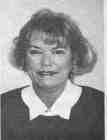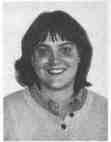SPECIAL FOCUS
Everything Old is New Again
The games have changed but will the role of parks and recreation? Leaders in the field candidly share their views about the new millennium.
BY DANIEL GIBBIE, CLP
|
Consider this article a reconnaissance flight into the future. Or sightseeing.
|
Perhaps the most significant role forever true to the profession of parks and recreation is creating opportunities for individuals and groups to participate in activities of choice for purposes of wellness, relaxation, diversion, or greater knowledge. Some would take a broader definition of the role parks and recreation plays in our society, such as resource concerns, social well-being, or economic value.
Indeed we have become, and will remain, a profession so holistic in its role that we will continue to be at the heart of people's lives for time immemorial. While the games may change, the importance of what we contribute to our society is irreplaceable and forever steadfast. While the definition of who we are will change from time to time, our significance will not.
So why look ahead? Why ask where parks and recreation will be contributing most significantly in the new millennium?
Vision.
"The most important role of visions—is to give focus to human energy. Visions are like lenses that focus unrefracted rays of light. To enable everyone concerned with an enterprise to see more clearly what's ahead of them....To envision the future we must be able to draw upon that very natural mental process of creating images. When we invent the future, we need to get a mental picture of what things will be like long before we begin the journey."
This definition by James Kouzes and Barry Posner from their book The Leadership Challenge: How to Keep Getting Extraordinary Things Done in Organizations (excerpted on page 18) is one way of stating that without a dream, without an eye on the horizon, we are failing to look beyond the confines of long-range planning.
Many people have written or spoken about our future as a state, nation, and planet. The close of the 20th century has guaranteed one thing: we are a global community. Financial challenges, wars, economic crisis, social or cultural upheavals, and other events will continue to affect parks and recreation's contribution to the well-being of our global community as well as neighbors closer to home.
Many current and distant situations seemingly have nothing to do with what our world may be like in the new millennium For example, what could these things have to do with parks and recreation in the future:
• The fact that no new major oil sources have been found since 1980.
November/December 1997 / 23
SPECIAL FOCUS
About the Hale-bopp Sun Singer photograph (below), professional photographer Tom Stevens says: "Richard Kempistry had the vision for the photograph.....I provided the technical expertise. The concept and previsualization are all his. I never would have gone over [to Allerton Park] and taken it."
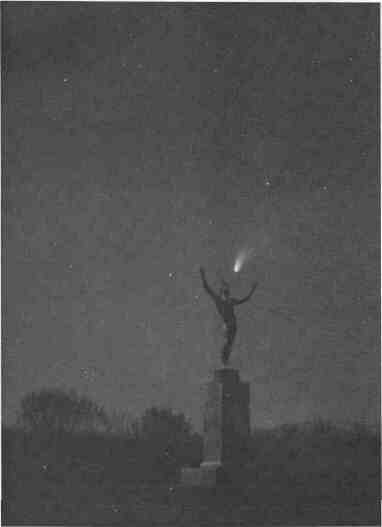
• The reality that the gates of the Glen Canyon Dam have been opened to create a managed flood in the Grand Canyon.
• The statistics that show Generation Xers are turning to religion for answers to their problems.
• The looming knowledge that the stresses and pressures of the information age and rapidly growing technology are affecting workers'
productivity in as many negative ways as positive ways.
• The effort to reduce or eliminate the tax disadvantages of marriage.
• The steadily increasing shortfalls in entitlement funds.
• The impending chance that 80 percent of the world's threefold population growth over the next centuries will be concentrated in large cities.
These facts and statistics have multiple implications. They will be just a very few of the forces that shape the 21st century.
In their book The Fourth Turning, historians William Strauss and Neil Howe convey a strong historical trend that paints a concerned picture of our future. Using past historical trends, they justify a scenario in which we will experience a period of upheaval in our society that will propel us into a new civil order. Defined as the "Fourth Turning" (from 2005 to 2026), we will experience an event or events
that will create a crisis mood in this country on the order of the Revolution, the Civil War, the Great Depression or World War II. Not to worry, though. The cycle that will follow this upheaval will be one marked with a valuable social rebirth.
We must be prepared for our role in society: a stabling force, a creative force, a provider of an oasis in a sea of challenges and change.
In an effort to look beyond the traditional framework of long-range planning (3, 5, and 10 years), I have sought the input of a variety of individuals from across the state of Illinois to paint a picture for us of where they see our profession in the new millennium. What follows are their visions.
You may share them, or you may not, but the reality is that without a vision, our journey will be random. In a way, these individuals are looking at our profession's role in the period of the Fourth Turning, or beyond.
Consider this article a reconnaissance flight into the future. Or sight-seeing.
Most importantly, consider it a vantage point from which we can discern where parks and recreation will be contributing in the 21st century. Use the impressions found here in the comments of these individuals along with those read and heard from other sources. They will help us on our journey to the new millennium.
DANIEL GIBBIE, CLP
is the superintendent of recreation for the Urbana Park District and the co-chair of the IAPD/IPRA Joint Publications Committee. Editor's Note: This series of articles is the vision and work of Don Gibble.
Professional photographers Tom Stevens and Richard Kempisly captured the Comet Hale-Bopp above 'The Sun Singer" statue in the University of Illinois' Robert Allerton Park, Monticello, III., while it was bathed in moonlight al 8:30 p.m. on April 16, 1997. Fuji 800 ISO film was used with exposure time of 15 seconds set at f 2.8, as the left side of the statue was fill-flashed using a Vivitar 285 flash unit set on low power and shot through a green filter.
"The Sun Singer" is a 16-foot bronze casting of the sculpture created by Swedish artist Carl Milles in 1919. Robert Allerton saw the sculpture while visiting Stockholm in 1929 and commissioned a replica for his home in Monticello, which has since become an extensive park located 30 miles southwest of Champaign-Urbana. More than 5,000 prints of this spectacular photograph have been sold to dale and are available from Photo Resource Center in Springfield for $ 14, postage included, 217.544.7721.
24 / Illinois Parks and Recreation
EVERYTHING OLD IS NEW AGAIN
Leaders in Environmental Stewardship
by Judy Beck
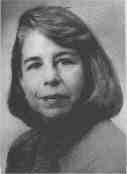
I see park districts as a backbone of and support for a strong sense of community. We will be leaders in environmental stewardship,
providing services in a sustainable manner, and education and guidance on the care of community resources, both natural and cultural.
Today people come to us and tomorrow we will also go to them—via technology on cable television and online services—as providers of special services in institutions such as day care and elder care. As we specialize, so will our districts.
Special legislation will make park districts more reflective of their home communities and the unique projects undertaken by those communities. Part of the new legislation will open the field to the kinds of partnerships and cooperative ventures we've only dreamed of until now.
Finally, I see more specialized expertise in very specialized fields working out of IAPD and IPRA: construction managers, environmental specialists, and media consultants.
Judy Beck is past president of the Glenview Park District and take Michigan manager for the U.S. Environmental Protection Agency.
Risk-taking Is the Norm
by Ronald H. Dodd,CLP
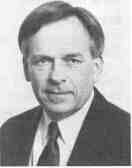
Risk-taking will be the norm in attempting to satisfy the public's demand. The public expects—and will continue to expect into the next
century—quality service, which is attentive to their varying lifestyles. Marketing through cable television and video kiosks strategically placed in the service area will place public park and recreation agencies in the forefront.
There are many reasons why public park and recreation professionals should address the role of their agencies in the next millennium. Among the issues are:
• rapidly changing demographics;
• the impact of the baby boomers and their children;
• public insistence that taxes remain flat or decrease;
• collaboration with commercial recreation;
• the expanding "core" program and remaining competitive.
In addition, most urban areas will see an increasing demand for public park and recreation facilities and services.
Public agencies should endeavor to seek cooperative agreements with commercial recreation outlets as a way of serving the future market. Developing agreements between private investors and the agency should be a win-win situation for everyone, especially the participants.
Ronald H, Dodd, CLP, is the executive director of the Joliet Park District.
Urbanization Will Call for More Partnerships
by Brent Manning
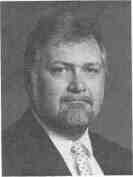
A recent study by Illinois State University indicates the state's population will expand only moderately into the year 2020, but more than 70 percent of Illinoisans will reside in just 11 of the state's 102 counties. The study also predicts the metropolitan Chicago area will continue to
expand its boundaries as far as 70 miles outside the city, with McHenry and Will counties seeing the largest growth.
As Illinois' population becomes more urbanized, the Department of Natural Resources will be working to strengthen and expand its relationship with local governments, including park districts. Urban park space, already at a premium, will become even more precious.
Cities, local planners, and state government must all work together to ensure we continue to provide necessary open space and quality outdoor recreational opportunities for our residents.
The departments grant programs for local parks and bicycle path grants will become even more critical. These programs have been a priority of the Edgar administration, and future administrators must continue to focus on the importance of these programs to urban Illinois.
Brent Manning is the director of the Illinois Department of Natural Resources
November/December 1997 / 25
SPECIAL FOCUS
Will There Be a Recreation Degree?
by Regina Glover
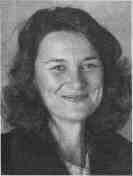
I foresee some clear changes in the academic preparation of leisure service professionals. I should note that some of these comments are
similar to ones made by Gordon Davies in the Point of View Column of the Chronicle of Higher Education, October 3, 1997.
• Paperless classes will become the norm.
• Students will select schools initially from the information they receive about programs from the Internet.
• There will be more online institutions such as the University of Phoenix and Graduate School of America.
• The impact of increasing numbers of people needing to meet certification requirements, say in therapeutic recreation, could flood the field.
• To balance the increased use of technology there will be a return to more applied learning for social science programs, and thus more community service activities by many disciplines.
• Specialized accreditation programs will decline, as universities will let the marketplace determine the caliber of graduates.
• There will be increased alliances between related fields in contrast to the increasing specializations of majors that many present-day directors experienced in their college careers.
• In 50 years I doubt there will be a recreation major by tide. Many majors will change their name to reflect changes in society and the new alliances formed between disciplines. I have no doubt, though, that individuals will still be studying leisure and preparing to facilitate community delivery.
• Greater distinctions will occur among state schools and the roles they will play. Rather than several schools doing the same thing, each is likely to have a particular niche.
• There will be greater alliances between states for public higher education.
• The majority of students will not experience a four-year education all at one institution. There will be greater in-home education and attendance at several institutions.
• Businesses will continue to compete in educating the work force. As private Industry realizes it moves faster in making some educational changes than most universities, advanced degrees and training will decline on traditional campuses.
Regina Glover is chair of the Department of Health, Education and Recreation at Southern Illinois University at Carbondale.
Youth of the Future
by Eddie Fay
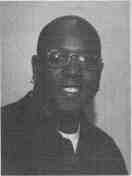
Many Americans talk about the difference between the youth of today versus the youth of 10 to 20 years ago. So as times change, so will the youth of America. Parks and recreation will also change in the area of youth programming.
With programming for youth changing every day, the ability of parks and recreation professionals to implement and maintain activities that build self-esteem, improve communication skills and constructively deal with the problems of today's youth will be Increasingly more important.
I feel recreation professionals, as well as other professionals who deal with youth on a daily basis, will need to be more creative in the activities they offer youth in the new millennium, 25 to 50 years from now. Also, youth program providers will play an active role in bringing young people together to help them understand their differences while learning to respect one another. Indeed, these things will be different in the new millennium; just how different will depend on the way youth program professionals deal with todays issues.
Eddie Fay is youth program coordinator for the Champaign Park District.
Enter the "Social Recreators"
by Jane Hodgkinson and Rebecca Scheberl
Our fascination with the future is partially rooted in the excitement of imagining the unknown mixed with the hope that our current efforts will benefit the next generation. As forecast, we are reminded that predictions are like lifting our skirt in church; you don't know what to reveal or how far to go. Therapeutic recreation will change in many ways.
26 / Illinois Parks and Recreation
EVERYTHING OLD IS NEW AGAIN
People who work in clinical settings will continue to use the term "therapeutic recreation." However, a much larger arm in the profession will evolve into a separate branch of "social recreators" who view their roles in terms of social and community services rather than treatment of individuals. The social recreators will view the individual benefits of recreation not in performance or assessment measures, but in overall well-being.
The groups served by social recreators will greatly expand to include youth at risk, correctional populations, diabetics, arthritis sufferers, burn victims, those suffering from conditions associated with aging, and the general population.
The huge increase in the number of seniors over the next 30 years will give rise to home health services that will most certainly include social recreators. As costs for skilled-nursing care increase, home healthcare will become a preferred choice for managed healthcare insurance reimbursement. Social recreators will teach people home-based activities, familiarize them with community resources, and transport people to and from recreational activities as an Individual or in groups.
Hospital mergers will account for less than ten national chains operating 90 percent of these facilities. Inpatient care and length of stay will grow even shorter than today because of medical developments. "TR" departments will merge with other disciplines. Community- based programs and managed home healthcare will be major employers of social recreators, as well as community park and recreation agencies.
We do know that change is inevitable. Our success is based on how well our field adapts to societal changes. The profession in some way must change, and one way is to become "social recreators."
Jane Hodgkinson, CLP, is the director of the Western DuPage Special Recreation Association (WDSRA). Rebecca Scheberl is an intern at WDSRA from the University of Wisconsin-LaCrosse.
Justifying Our Existence
by Dr. Bruce Larson
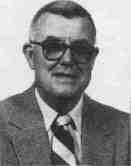
This current period of strong social and economic stability makes it much easier to express environmental appreciation. We are experiencing
strong environmental support, one facet of which concerns the values of open space for recreational use and another for the preservation of biological diversity. However, we know that population pressures will increase and history tells us that more stressful economic times
will come. How will environmental concerns and open space appreciation of lands hold up then?
Increasing population pressures on land use will continue to become more acute. Park lands will not be immune and it will become increasingly more difficult to set aside more park areas as well as defend those already so designated. If not the site of active recreation activities, it is likely in many situations that park lands used for more passive pursuits will be looked upon as potentially available for other uses that, it will be argued, have higher priority.
Illinois' more than 300 independent park and forest preserve districts are major holders of lands— beneficiaries of a governmental system created in the late 1800s, which has become widely adopted through local community citizen action. These districts possess strong powers to protect lands, especially so against the desires of other governmental units. The districts are strong and stable, as evidenced by the fact that no functional Illinois park district has ever been abolished.
It is likely we will see an increasing necessity for justification of the use of such lands in terms of factual information on economic and social benefits. We all assume that a clean environment and recreational opportunities should mean fewer physical health problems and areas of passive relaxation should mean fewer mental health problems. But the pressure will be on us to document these suppositions with facts. The quantification of these positive health and economic benefits will not be easy, and in most situations will require research that recognizes specific benefits and compares them to the benefits derived from other societal priorities. This justification will likely become the major
challenge into the next millennium.
Dr. Bruce Larson is the president of the Urbana Park District and the immediate past president of the Illinois Association Park Districts.
Life. Preserve It.
by Mike Rylko,CLP
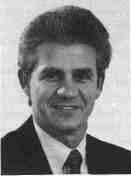
I see the parks and recreation field becoming even more important to communities they now serve.
The development of recreational facilities will be one of the greatest

|
Swedish sculptor Carl Milles' "The Sun Singer" (photo above) is Pheobus Apollo, the Greek sun-god; the brilliant, beautiful god of truth, light and all that is civilized in mankind. Apollo exemplified the best that man can achieve. He is an inspiration to those in the human race who set their goals high.
|
- from Jennifer Eickman's Champaign-Urbana Guide. January 1981 issue
September/October 1997 / 27
SPECIAL FOCUS
"If you are thinking one year ahead, you plant rice. If you are thinking twenty years ahead, you plant trees. If you are thinking one hundred years ahead, you educate people."
--- Chinese Proverb
|
challenges our future professionals will face; the financial aspect being the most challenging The use of taxation as we know it will not exist. I see future financial needs being met by public agencies working together with other nonprofits and the private sector. I see large corporations developing recreational facilities for communities in which their businesses thrive. I see joint ventures among entities in order to help communities cope with much of the financial burden.
I see future facilities incorporating and serving the needs and expectations of all social and economic group of people. I see the demise of the
private, often expensive, exclusionary club-type facilities.
I also see park districts becoming more involved in support of natural resources and push for worldwide preservation.
Past and present slogans such as ""Life. Be in it," "Take Time For Fun!", "The Benefits Are Endless...", will change to something like "Life. Preserve It."
Mike Rylko. CLP, is the director of parks and recreation for the Buffalo Grove Park District.
Educating People Is the Key
by Ken Kutska,CLP
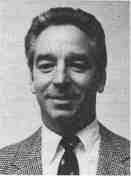
Those who are familiar with the importance of public recreation services and natural resource management in the United States will recognize that several of the emerging roles of today's park and recreation movement are not unique to the recent past or present. Citizen and public actions from the mid-1800s to the 1930s have continuously established recreation and park services and systems in direct reaction to unhealthy and unsafe conditions.
With all this change around us, the mainstream of the park and recreation resource (where we recreate) has not and probably will not change. Park planners will continue the struggle to find the proper balance between four dimensions of public spaces; natural, historical, recreational, and social.
However, one emerging role that I would like to see move up on our "To Do" list is to be leaders in developing a more comprehensive statewide and nationally organized program of environmental education and awareness. If we are to get people to
rejoin the natural world while still providing the opportunity for people to reach their true potential, then we must set aside properties which define the basic purpose for which they have been set aside.
In order to accomplish this goal and others, we must:
• Effectively market and educate the general public regarding the benefits that park and recreation services contribute to society.
• Design for park and recreation facilities and programs—driven by local input and community needs—that are low maintenance, multi-use and efficient effective users of available funding and resources.
• Sustain humankind and its environment by becoming interdisciplinary problem-solvers through intergovernmental cooperation and partnerships with any entity responsible for or related to the public's quality of life.
Ultimately, what is the key to our success? The following Chinese proverb applies to our challenge:
"If you are thinking one year ahead, you plant rice.
If you are thinking twenty years ahead, you plant trees.
If you are thinking one hundred years ahead, you educate people."
Ken Kulska, CLP, is the superintendent of parks and planning for the Wheaton Park District.
|
Conclusion
Ian L. McHarg wrote, in his book Design with Nature:
"This [book] is a personal testament to the power and importance of sun, moon, and stars, the changing seasons, seedtime and harvest, clouds, rain and rivers, the oceans and the forests, the creatures and the herbs. They are with us now, co-tenants of the phenomenal universe, participating in that timeless yearning that is evolution, vivid expression of time past, essential partners in survival and with us now involved in the creation of the future."
It is our challenge as providers of parks and recreation services to see to it that we remain an active and constructive co-tenant
in the global community we have come to know, and in the immediate neighborhoods in which we play such an important role.
--- by Daniel Gibble, CLP
|
28 / Illinois Parks and Recreation






